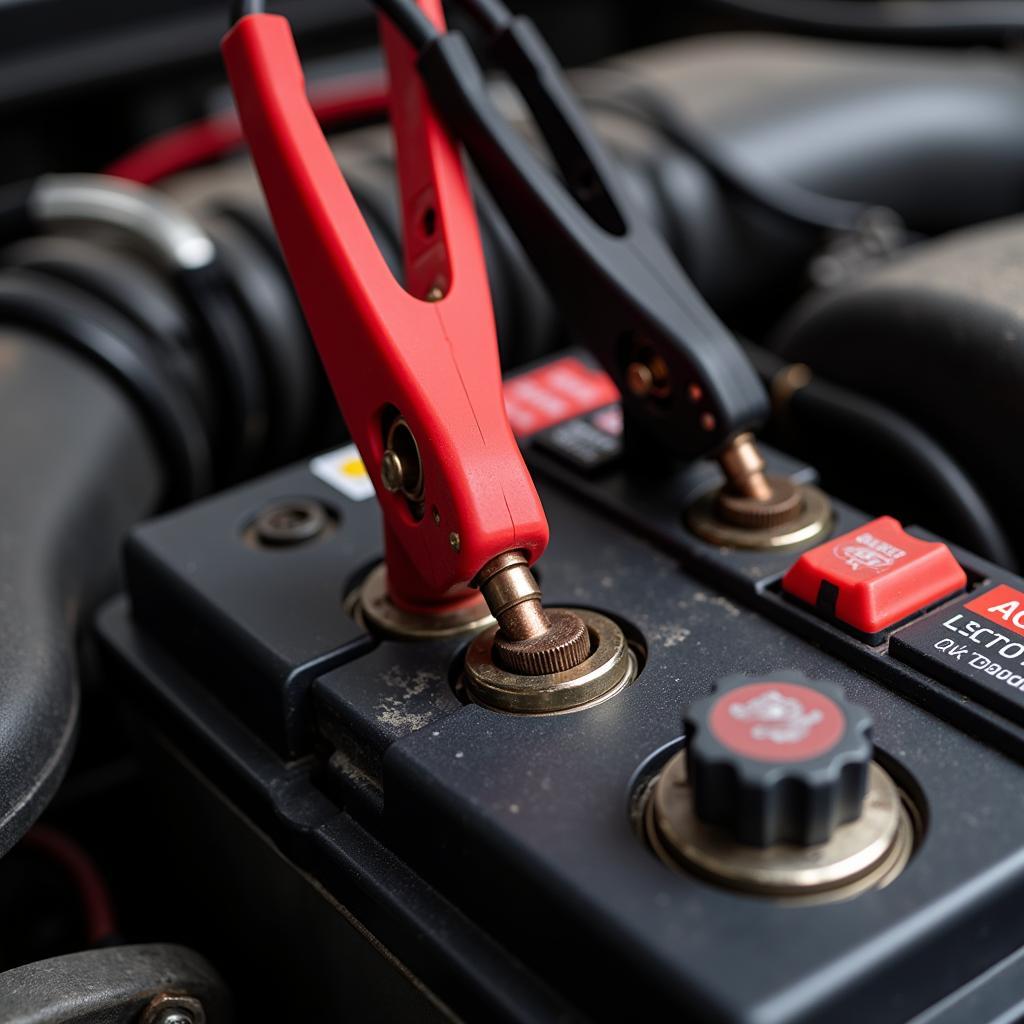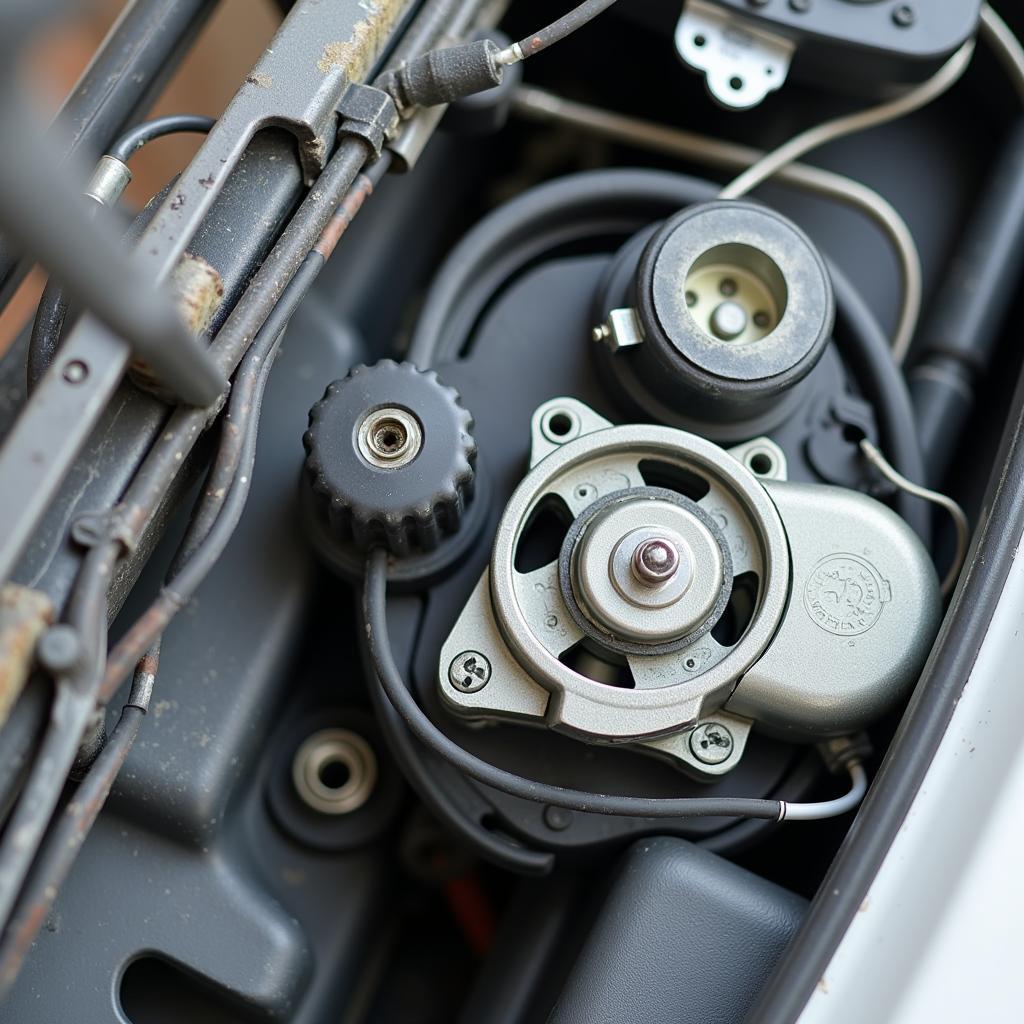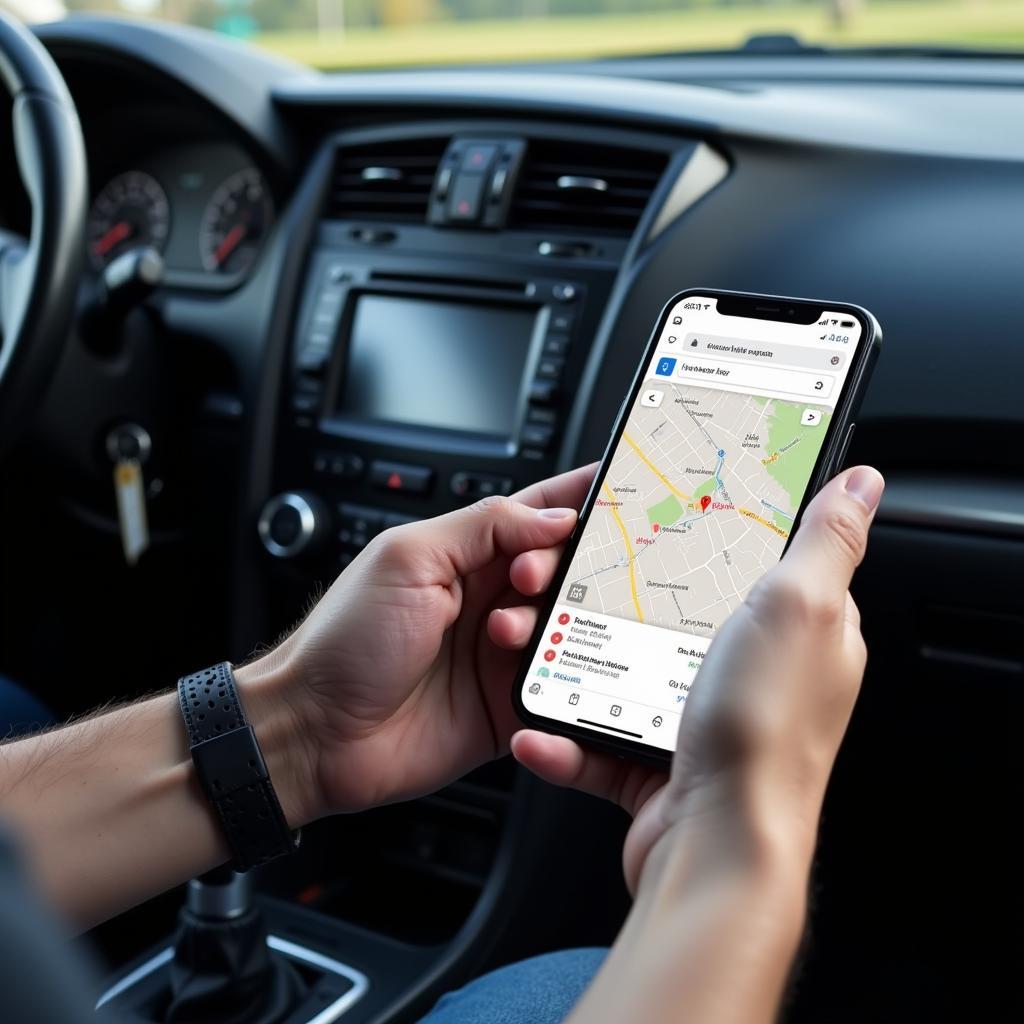Rust bubbles on your car are never a welcome sight. They might seem small and insignificant at first, but if left untreated, these tiny rust spots can quickly spread and cause serious damage to your vehicle’s body. Knowing how to fix a small rust bubble on your car can save you a lot of money and hassle in the long run. This guide will walk you through the steps involved in tackling this common car problem.
Understanding the Enemy: Why Rust Bubbles Form
Before diving into the repair process, it’s helpful to understand why rust bubbles form in the first place. Rust, or iron oxide, occurs when iron is exposed to oxygen and moisture. This reaction weakens the metal, causing it to expand and form those unsightly bubbles you see on your car’s paint. Common areas for rust bubbles include wheel wells, rocker panels, and around door edges. These areas are particularly susceptible due to their exposure to road salt, water, and other corrosive elements.
How to Identify the Severity of the Rust Bubble
Not all rust bubbles are created equal. Some are superficial, affecting only the paint layer, while others can penetrate deep into the metal, requiring more extensive repairs. Identifying the severity is crucial for determining the appropriate course of action. If the rust bubble is small and the paint is just starting to lift, you might be able to address it with some DIY techniques. However, if the rust is widespread or has eaten through the metal, it’s best to consult a professional auto body repair shop.
DIY Rust Repair: A Step-by-Step Guide
For minor rust bubbles, you can often tackle the repair yourself. Here’s How To Fix Small Rust Bubble On Car using some basic tools and materials:
- Gather your supplies: You’ll need sandpaper (various grits), rust converter, primer, touch-up paint, clear coat, masking tape, and a clean cloth.
- Prepare the area: Clean the rusted area thoroughly with soap and water. Dry it completely.
- Remove the rust: Use sandpaper to remove the bubbling paint and any loose rust. Start with a coarser grit and gradually move to a finer grit for a smooth finish.
- Apply rust converter: Once you’ve removed all the rust, apply a rust converter to the affected area. This will neutralize any remaining rust and prevent it from spreading further.
- Prime the area: After the rust converter has dried, apply a thin coat of primer to the bare metal. This will create a smooth surface for the paint to adhere to.
- Apply touch-up paint: Carefully apply touch-up paint that matches your car’s color. Apply multiple thin coats, allowing each coat to dry before applying the next.
- Apply clear coat (optional): For added protection, apply a clear coat once the touch-up paint has dried.
- Finishing touches: Remove the masking tape and buff the area lightly to blend the repair with the surrounding paint.
“Proper surface preparation is key to a successful rust repair,” says John Smith, an automotive expert with over 20 years of experience. “Take your time and ensure the area is clean and free of rust before applying any primer or paint.”
When to Call the Professionals
While DIY repairs can be effective for small rust bubbles, more extensive rust damage requires professional attention. If the rust has penetrated deep into the metal or covers a large area, it’s best to consult an auto body repair shop. They have the tools and expertise to repair or replace the affected panels, ensuring a long-lasting and aesthetically pleasing result. “Ignoring extensive rust can compromise the structural integrity of your vehicle,” warns Lisa Jones, a certified automotive technician. “Don’t delay seeking professional help if you’re dealing with severe rust damage.”
Preventing Future Rust Bubbles
Prevention is always better than cure. Here are a few tips to help prevent future rust bubbles on your car:
- Wash your car regularly: Regular washing removes dirt, salt, and other corrosive substances that can contribute to rust formation.
- Wax your car: Waxing creates a protective barrier against the elements, helping to prevent rust.
- Touch up paint chips: Address paint chips promptly to prevent rust from developing underneath.
- Consider undercoating: Undercoating can provide an extra layer of protection against rust, especially in areas prone to exposure.
Conclusion
Fixing a small rust bubble on car is a manageable task if addressed early. By following the steps outlined in this guide, you can prevent further damage and maintain the appearance of your vehicle. Remember, early detection and prompt action are crucial when dealing with rust. For more complex rust issues or if you need assistance with fixing a leaky car sunroof, feel free to contact us at AutoTipPro at +1 (641) 206-8880. Our office is located at 500 N St Mary’s St, San Antonio, TX 78205, United States. We’re always here to help!
FAQ
- Can I use any type of primer for rust repair? No, it’s important to use a rust-inhibiting primer specifically designed for automotive applications.
- How long does it take for rust converter to dry? Drying times vary depending on the product and ambient conditions. Refer to the manufacturer’s instructions for specific drying times.
- What if the rust returns after I’ve repaired it? If the rust returns, it may indicate a deeper rust issue that requires professional attention.
- Is it necessary to use a clear coat after touch-up paint? While not always required, a clear coat can provide added protection and help blend the repair with the surrounding paint.
- Can I prevent rust by parking my car in a garage? Parking in a garage can help reduce exposure to the elements and minimize the risk of rust.
- How often should I wax my car to prevent rust? Waxing your car every few months is generally recommended, especially in harsh climates.
- What is the cost of professional rust repair? The cost of professional rust repair varies depending on the extent of the damage and the type of repair required.







Leave a Reply